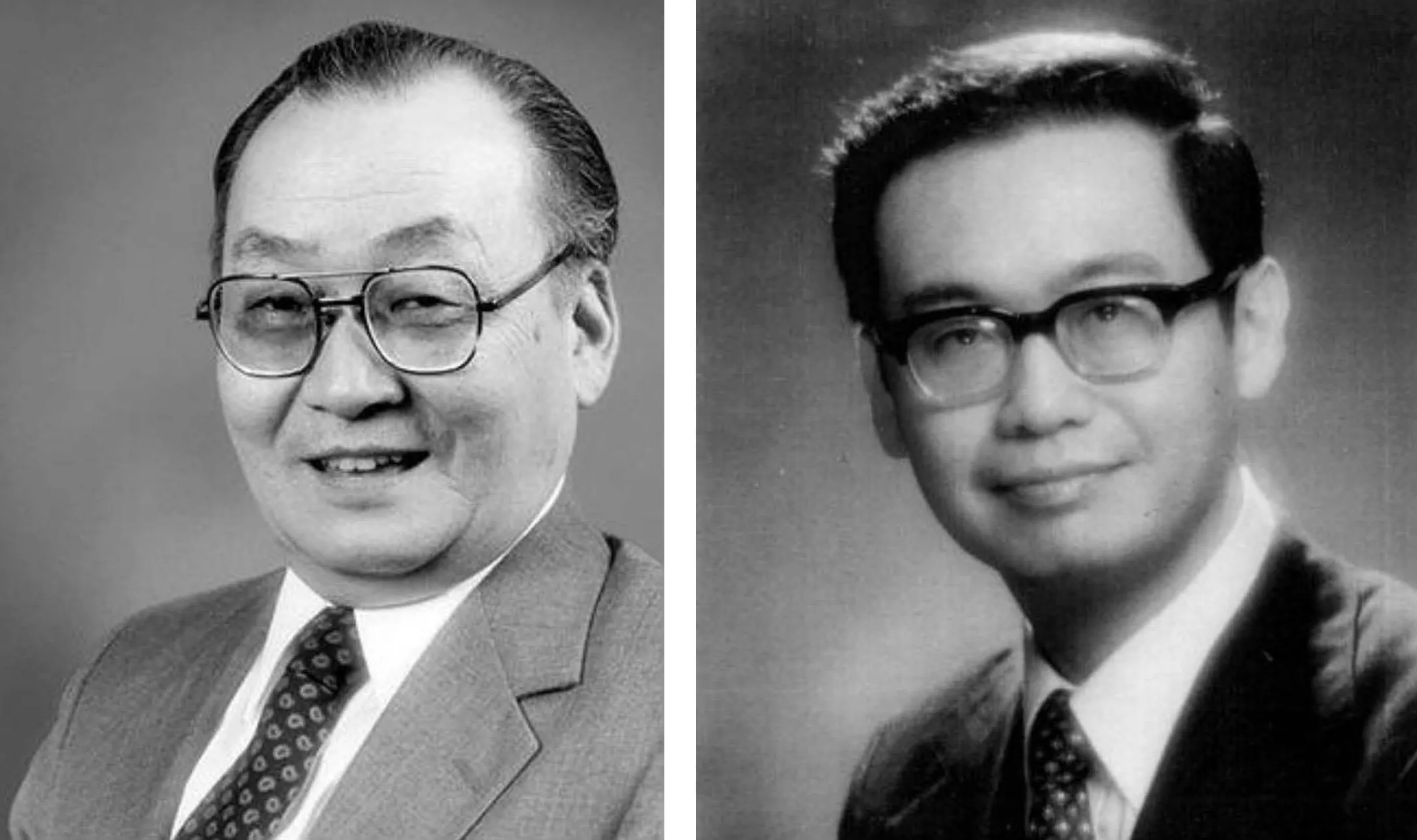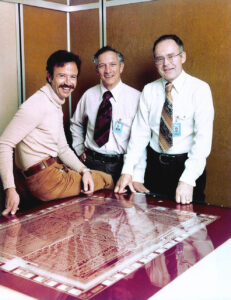Introduction
The semiconductor industry has seen remarkable transformations over the past century, driven by the groundbreaking work of visionaries and innovators. This blog post delves into the contributions of ten legends whose work has fundamentally shaped the pioneers of the Semiconductor Industry, propelled technological advancements and redefined the capabilities of electronic devices. In this second part, we explore the achievements of pioneers like Aart de Geus, Alberto Vincentelli, Lynn Conway, and others who have left an indelible mark on the field.
Aart de Geus: Founder of Synopsys
Aart de Geus is a pioneering figure in the field of electronic design automation (EDA). He co-founded Synopsys in 1986, a company that revolutionized the way semiconductors are designed.
Synopsys introduced the concept of logic synthesis, automating the process of converting high-level design descriptions into gate-level implementations.
This innovation greatly enhanced chip design efficiency and accuracy, enabling rapid development of complex integrated circuits (ICs). De Geus’s leadership made Synopsys a key player in the Pioneers of the Semiconductor Industry providing designers with advanced tools and methodologies.
Read More: Samsung Unveils Ambitious Roadmap for 2nm-Class Process Technologies – techovedas
Alberto Sangiovanni-Vincentelli: Founder of Cadence
Alberto Sangiovanni-Vincentelli co-founded Cadence Design Systems in 1988, another giant in the EDA industry. Cadence provides comprehensive software, hardware, and IP for designing integrated circuits, systems on chips (SoCs), and printed circuit boards (PCBs).
Vincentelli’s contributions to system design and verification have been instrumental in advancing the capabilities of EDA tools.
His work has empowered designers to handle modern semiconductor device complexities, ensuring reliable and high-performing electronic products.
Read More: Intel Partners with Sharp to Utilize Underused LCD Plants for Chip Research – techovedas
Lynn Conway: VLSI Microchip Pioneer
Lynn Conway’s contributions to Very Large Scale Integration (VLSI) design have been foundational to modern semiconductor manufacturing. Her collaboration with Carver Mead in the late 1970s led to the seminal textbook “Introduction to VLSI Systems.”
This work introduced new design methodologies that streamlined chip development.
Conway’s innovations in microchip design paved the way for the foundry-based production model.
This model decouples design and manufacturing, allowing for greater specialization and efficiency in the Pioneers of the Semiconductor Industry
Bob Widlar: Analog Circuit Design Genius
Bob Widlar was a legendary figure in analog circuit design. His innovative designs in the 1960s and 1970s set new standards for performance and integration in analog ICs.
Widlar developed groundbreaking operational amplifiers, voltage regulators, and other analog circuits that became the foundation for many modern electronic devices.
His contributions significantly advanced the field of analog electronics, making high-performance analog ICs more accessible and reliable.
Barry Gilbert: Inventor and Innovator
Barry Gilbert is renowned for his work in analog and mixed-signal circuit design. He is best known for inventing the Gilbert cell. This key component is used in many analog multiplier and mixer circuits in communication systems.
Gilbert’s work has profoundly impacted the development of RF and communication ICs. His innovations enable higher performance and more efficient signal processing in various applications, from radios to mobile phones.
John von Neumann: Computing Pioneer
John von Neumann was a mathematician and physicist whose work laid the groundwork for modern computing. His conceptualization of the stored-program computer architecture, known as the von Neumann architecture. It is the foundation of virtually all modern computers.
This architecture separates the storage and processing of instructions, enabling more flexible and powerful computing systems. Von Neumann’s contributions have been crucial in the evolution of digital electronics and computer science.
Mohamed Atalla and Dawon Kahng: The MOSFET Innovators
Mohamed Atalla and Dawon Kahng made groundbreaking contributions to semiconductor technology with the invention of the metal-oxide-semiconductor field-effect transistor (MOSFET) in 1959.
The MOSFET became the building block of modern electronic devices due to its scalability, low power consumption, and high efficiency.
Their work has been fundamental to the development of microprocessors, memory chips, and a vast array of digital and analog circuits.
Read More: Top 5 Best-Selling Books on Semiconductor Technology 2024 Worldwide – techovedas
Frank Wanlass and Robert Dennard: CMOS and DRAM Pioneers
Frank Wanlass is credited with the invention of complementary metal-oxide-semiconductor (CMOS) technology in 1963, a key technology for building low-power, high-density integrated circuits.
CMOS technology is ubiquitous in modern electronics, from microprocessors to memory devices.
Robert Dennard’s invention of dynamic random-access memory (DRAM) in 1967 revolutionized computer memory, providing high-density, low-cost storage solutions that have become a staple in computers and other digital devices.
Bob Noyce: Co-Inventor of the Integrated Circuit
Bob Noyce co-invented the integrated circuit (IC) along with Jack Kilby, a breakthrough that revolutionized electronics by enabling the miniaturization and integration of multiple electronic components on a single chip. Noyce later co-founded Intel Corporation, where his vision and leadership helped drive the development of the microprocessor.
His contributions have been pivotal in the evolution of the semiconductor industry, leading to the proliferation of personal computers and digital devices.
Federico Faggin: Microprocessor Pioneer
Federico Faggin played a crucial role in the development of the first commercial microprocessor, the Intel 4004, in 1971. Faggin’s expertise in MOS technology and chip design was instrumental in creating the architecture of the microprocessor, a fundamental component of modern computing. His work at Intel and later at Zilog, where he developed the Z80 microprocessor, has had a lasting impact on the evolution of microprocessors and the Pioneers of the Semiconductor Industry.
Carver Mead: VLSI Design Innovator
Carver Mead, in collaboration with Lynn Conway, revolutionized VLSI design with their influential textbook and design methodologies.
Mead’s work emphasized the importance of scalable design principles and laid the foundation for modern IC design practices. His contributions to semiconductor technology extend beyond VLSI, including advancements in neural networks and the development of tools and techniques that have shaped the industry.
Shuji Nakamura: The Blue LED Pioneer
Shuji Nakamura’s invention of the blue LED in the 1990s was a significant milestone in semiconductor technology.
This breakthrough enabled the development of white LED lighting, which is energy-efficient and has a wide range of applications, from displays to general lighting.
Nakamura’s work has had a profound impact on the lighting industry and has contributed to the advancement of energy-saving technologies.
Jensen Huang: GPU Innovator
Jensen Huang co-founded NVIDIA in 1993 and has been a driving force in the development of graphics processing units (GPUs). Under Huang’s leadership, NVIDIA has transformed GPUs from graphics accelerators into powerful parallel processors capable of handling complex tasks in AI, deep learning, and scientific computing.
His vision has expanded the role of GPUs in the semiconductor industry, making them essential components in modern computing.
Martin van den Brink: ASML’s Lithography Leader
Martin van den Brink is a key figure in the development of advanced lithography technology at ASML, a company at the forefront of semiconductor manufacturing equipment.
Van den Brink’s work in developing extreme ultraviolet (EUV) lithography has been critical in enabling the production of smaller, more powerful semiconductor devices.
His contributions have helped push the boundaries of Moore’s Law, ensuring continued advancements in chip performance and miniaturization.
These legends have each played a crucial role in shaping the semiconductor industry, driving innovations that have transformed technology and society. Their contributions continue to influence the development of new devices and applications, ensuring that the semiconductor industry remains a dynamic and vital field.








